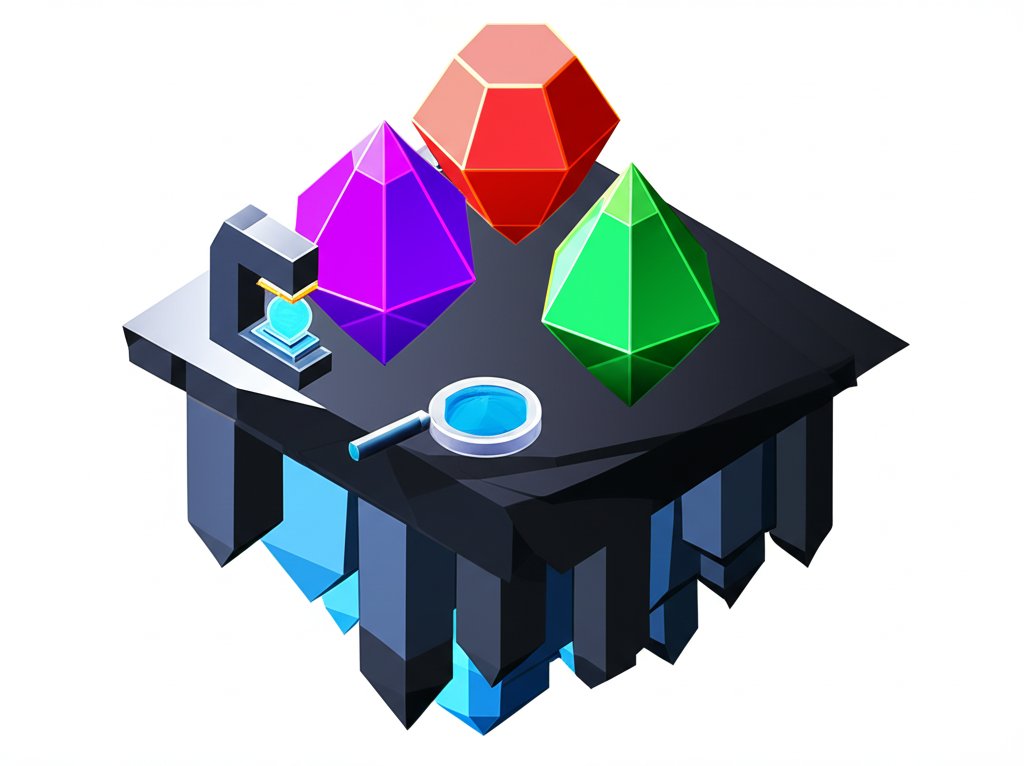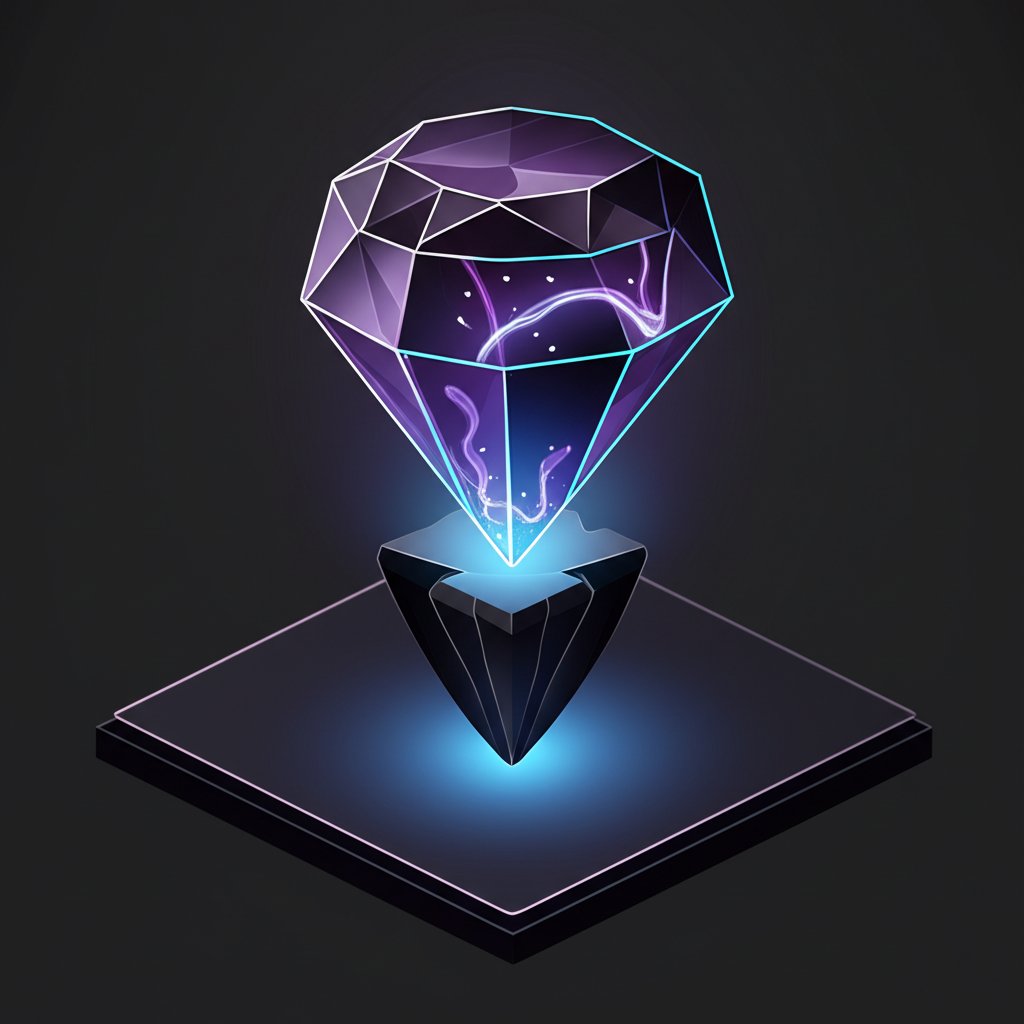Embark on an extraordinary adventure where we unearth the captivating world of gemstones! Beyond the sparkle of diamonds and the allure of rubies lies a treasure trove of unusual gemstones and astonishing gemstone facts that most people never encounter. If you’ve ever wondered about the peculiar origins, the arcane lore, or the surprising scientific properties of Earth’s most dazzling creations, you’re in for a treat. This article is your ultimate guide, designed to reveal the hidden gemstones and profound gemstone secrets that define these magnificent minerals, challenging your perceptions and enriching your appreciation for the natural world. Get ready to dive deep into gemstone trivia that will leave you astounded and truly knowledgeable!
Unearthing the Earth’s Most Enigmatic Treasures: Unusual Gemstones

The universe of gemstones is vast, far exceeding the “big four” that dominate jewelry displays. While diamonds, rubies, emeralds, and sapphires are undeniably beautiful, countless other natural wonders possess unique characteristics, extraordinary beauty, and breathtaking rarity, qualifying them as truly unusual gemstones. These lesser-known marvels often hide in plain sight, waiting for curious minds to uncover their stories.
Beyond the Big Four: Defining “Unusual” in the Gemstone World
What makes a gemstone “unusual”? It’s often a combination of extreme rarity, peculiar optical effects, unique chemical composition, or a limited geographic origin. While over 4,000 minerals exist, only about 100 are regularly cut and polished into gemstones, and a mere fraction of those are truly rare or possess distinct properties that set them apart. An “unusual” gem challenges common perceptions, offering a fresh perspective on natural beauty.
A Glimpse into the Rarest of the Rare: Specific Examples
To truly appreciate unusual gemstones, we must look beyond the familiar. Here are some of the world’s most uncommon and fascinating examples:
- Painite: Once considered the world’s rarest gemstone, Painite is an orange-red to brownish-red borate mineral. Discovered in Myanmar in the 1950s, for decades only two faceted crystals were known to exist. While more have been found recently, it remains exceptionally rare and highly sought after by collectors for its almost mythical status.
- Taaffeite: Named after its discoverer, Richard Taaffe, who bought a faceted stone thinking it was spinel in 1945. This purple-red to violet mineral is incredibly scarce, with most specimens being found in Sri Lanka and Tanzania. Its rarity stems from its unique hexagonal crystal structure, making it difficult to find in suitable gem quality.
- Musgravite: Closely related to Taaffeite, Musgravite was first discovered in Australia’s Musgrave Ranges in 1967. For many years, only a handful of specimens existed, making it one of the most expensive and rare gemstones on the planet. Its colors range from greenish-gray to purplish-gray, and its complex chemistry makes it a fascination for gemologists.
- Grandidierite: This extremely rare bluish-green mineral was first found in Madagascar in 1902. Grandidierite’s captivating color is due to traces of iron, and it exhibits strong pleochroism, meaning it appears different colors (blue, green, white) when viewed from various angles. High-quality, transparent faceted examples are exceptionally scarce.
- Alexandrite: Known as “emerald by day, ruby by night,” Alexandrite is famous for its dramatic color-change phenomenon. Under daylight, it appears green to blue-green, but shifts to red to purplish-red under incandescent light. This chameleon-like quality makes it one of the most mesmerizing and unusual gemstones, with premium specimens fetching exorbitant prices. Its rarity is linked to the presence of chromium, which is necessary for the color change, and its primary source in Russia (Urals) is largely depleted.
Organic Oddities: Pearls and Amber’s Surprising Relatives
While most gemstones are minerals formed deep within the Earth, some are organic, meaning they originate from living organisms. Everyone knows pearls, but there are other fascinating organic hidden gemstones with unique properties:
- Ammolite: This iridescent, opalescent natural gemstone is formed from the fossilized shells of ancient marine mollusks called ammonites. Found primarily in Alberta, Canada, Ammolite displays a breathtaking play of color, often flashing greens, reds, and oranges, reminiscent of a liquid rainbow. Its stunning iridescence and organic origin make it a highly prized and unusual gemstone.
- Amber: While not a mineral, amber is fossilized tree resin, often preserving ancient insects or plant matter within its golden depths. This natural inclusion makes each piece a tiny window into prehistoric ecosystems, adding immense scientific and aesthetic value to this ancient “gem.”
Deep Dives into Gemstone Secrets and Astonishing Facts
Beyond their visual allure, gemstones harbor gemstone secrets rooted in their geological journeys and unique optical properties. Understanding these gemstone facts elevates our appreciation from mere admiration to genuine wonder.
The Mind-Boggling Lifespans of Ancient Gems
Imagine holding a piece of Earth’s history in your hand. Most gemstones boast incredibly ancient origins. Diamonds, for instance, are typically 1 to 3.5 billion years old, formed deep within the Earth’s mantle under immense pressure and heat – that’s older than most life on Earth! Even relatively “young” gems like opals, often formed over millions of years, represent geological timescales that are hard for us to comprehend. These gemstone facts remind us of the immense forces that shape our planet.
A truly striking example of age among unusual gemstones comes from Zircon. Some zircons found in Western Australia are believed to be up to 4.4 billion years old, making them the oldest known minerals on Earth, offering scientists crucial insights into the planet’s early formation.
Unexpected Origins: From Space to Living Organisms
While the deep Earth is the primary source, some gemstones have truly unusual gemstones origins, adding to their mystique:
- Moldavite: This striking olive-green glassy gem is a type of tektite, formed from the impact of a massive meteorite in what is now Southern Germany about 14.7 million years ago. The extreme heat and pressure of the impact instantly melted and fused terrestrial rock and extraterrestrial material, creating Moldavite as it cooled and fell back to Earth. Its extraterrestrial connection makes it a truly unique and sought-after stone.
- Pearls: As mentioned, pearls are the epitome of organic gemstones, formed within the soft tissues of living mollusks. When an irritant enters the shell, the mollusk secretes layers of nacre, gradually building up the lustrous pearl. This ongoing biological process makes each pearl unique, a testament to living artistry.
- Petrified Wood: This often-overlooked “gemstone” is formed when ancient wood is buried under sediment and replaced by mineral solutions, typically silica, over millions of years. The original cell structure of the wood is perfectly preserved, resulting in a stone that displays the intricate patterns and textures of wood, but with the hardness and polish of quartz. Each piece tells the story of an ancient forest.
Gemstone Phenomena: Play-of-Color, Asterism, and Chatoyancy
Some unusual gemstones display captivating optical effects, known as phenomena, which make them appear almost magical. These are true gemstone secrets that reveal the intricate dance of light within their structure:
- Play-of-Color (Opalescence): Best observed in opals, this phenomenon is caused by the diffraction of light as it passes through microscopic silica spheres within the gem. This creates a dazzling spectrum of spectral colors that shift and dance as the stone is moved. Black opals, with their dark body tone enhancing the vivid colors, are among the most valuable and visually stunning.
- Asterism (Star Effect): Found in star sapphires, star rubies, and some garnets, asterism is the appearance of a star-like pattern on the surface of a cabochon-cut gemstone. This is caused by reflections from tiny, needle-like mineral inclusions (typically rutile) aligned in specific directions within the crystal structure.
- Chatoyancy (Cat’s Eye Effect): Seen famously in cat’s eye chrysoberyl but also in tourmaline and apatite, chatoyancy is a silky, luminous band of light that perfectly resembles a feline’s eye. This effect is also due to parallel needle-like inclusions, but they are denser and more uniformly oriented, creating a single, sharp line of light.
Gemstones That Change: Thermo- and Photochromism
The chameleon-like qualities of some unusual gemstones go beyond Alexandrite. Some gems change color in response to heat (thermochromism) or light (photochromism), revealing fascinating gemstone facts about their chemical makeup:
- Tanzanite: While not a true color-change gem like alexandrite, Tanzanite is pleochroic, meaning it shows different colors depending on the viewing angle. However, its iconic deep blue-violet hue is often achieved through gentle heat treatment, which enhances its natural color and is an accepted industry practice. Unheated Tanzanite can be yellowish-brown or greenish.
- Hackmanite: This rare variety of sodalite exhibits photochromism, also known as tenebrescence. Initially white, gray, or pale pink, Hackmanite can change to a vivid purple or raspberry color when exposed to strong UV light (like sunlight) and then fade back to its original shade in darkness. This surprising reversible color change makes it a truly enchanting and unusual gemstone.
Hidden Gemstones of History and Legend
Throughout history, gemstones have been more than just adornments. They’ve been symbols of power, objects of superstition, and even tools, each with its own trove of hidden gemstones lore and gemstone secrets.
Forgotten Beauties: Gems That Fell Out of Favor
Fashion and availability dictate which gemstones rise to prominence. Many once-cherished gems are now considered hidden gemstones or less common, but still hold immense beauty and historical significance:
- Marcasite: Not to be confused with pyrite (“fool’s gold”), genuine marcasite (iron sulfide) was highly popular in Victorian jewelry, valued for its subtle, metallic shimmer and intricate settings. Its delicate nature makes it challenging to work with, yet its antique charm is undeniable.
- Jet: A dense, black fossilized wood, Jet was the quintessential mourning jewelry of the Victorian era, particularly after Prince Albert’s death. Its deep, velvety black color and lightweight nature made it ideal for intricate carvings, and while less common now, it remains a powerful historical gem.
- Peridot from Zabargad Island: While peridot is not rare, its most ancient and prized source was Zabargad Island (St. John’s Island) in the Red Sea. Mined for over 3,500 years, this source produced some of the finest, deep olive-green peridot known. The island is now largely depleted of commercial deposits, making peridot from this specific ancient source a historical “hidden gemstone.”
Cursed or Lucky? The Lore Behind Notable Gems
The gemstone secrets of history often involve captivating legends. While we won’t delve into specific cursed gems, the idea that certain stones possess powers—for good or ill—has permeated cultures for millennia. This gemstone trivia highlights the human tendency to imbue precious objects with symbolic meaning. Many ancient cultures believed gemstones could offer protection, heal ailments, or attract prosperity, linking their perceived power to their rarity and beauty.
Gems of Ancient Civilizations: Beyond Adornment
Ancient civilizations recognized gemstone facts and properties far beyond mere aesthetics. They used hidden gemstones for various practical and ritualistic purposes:
- Lapis Lazuli: Highly prized in ancient Egypt and Mesopotamia, Lapis Lazuli was ground into pigment for paints and cosmetics, carved into amulets, and used to adorn burial masks, including that of Tutankhamun. Its deep blue color symbolized royalty and the heavens.
- Jade: Revered in Chinese culture for thousands of years, jade (nephrite and jadeite) was considered the “Stone of Heaven.” It was meticulously carved into tools, weapons, ceremonial objects, and burial suits, believed to confer immortality and wisdom. Its toughness made it suitable for practical applications, while its beauty lent itself to intricate art.
- Carnelian: This orange-red chalcedony was popular in ancient Rome and Egypt for seals and signet rings. Its hardness meant wax wouldn’t stick to it, making it ideal for imprinting official documents. It was also believed to bestow courage and vitality upon its wearer.
Decoding Gemstone Properties: Facts That Will Astound You
The scientific makeup and physical attributes of gemstones are just as fascinating as their history. Unlocking these gemstone facts helps us understand their durability, rarity, and how they interact with light.
The Mohs Scale and Beyond: Hardness Anomalies
The Mohs scale, ranging from 1 (talc) to 10 (diamond), measures a mineral’s resistance to scratching. While a great general guide, some gemstone facts about hardness are more nuanced:
- Diamond’s Superior Hardness: While diamond is a 10, it’s not just “one unit” harder than corundum (ruby/sapphire) at 9; it’s four times harder. This exponential leap in hardness is a significant gemstone secret behind its unmatched durability.
- Directional Hardness: Some gems, like Kyanite, exhibit anisotropic hardness, meaning their hardness varies depending on the direction of crystal growth. Kyanite can be a 4.5 along one axis and a 7 along another, making it a challenge for cutters. This is a crucial piece of gemstone trivia for anyone working with less common materials.
Clarity, Color, Carat: The Unseen Influences on Value
The “4 Cs” (Carat, Color, Clarity, Cut) are fundamental but contain hidden gemstones of complexity:
- Color Saturation: Beyond just “red” or “blue,” the intensity and purity of a gem’s color (saturation) can dramatically impact its value. A “pigeon’s blood” ruby or a “royal blue” sapphire demonstrates this, where specific, vivid hues command the highest prices. This is a subtle yet vital gemstone fact.
- Inclusions as Fingerprints: While perfect clarity is often desired, some inclusions can enhance a gem’s value. The “jardin” (garden) in emeralds is characteristic and accepted, and the “horsetail” inclusions in Demantoid Garnet are highly prized, serving as natural proof of origin and enhancing their unique beauty. These are unusual gemstones where “imperfections” become assets.
Fluorescence and Luminescence: Gems That Glow in the Dark
Certain unusual gemstones possess properties that make them glow under specific conditions, revealing striking gemstone secrets:
- Fluorescence: Many diamonds, rubies, and some opals exhibit fluorescence, meaning they temporarily glow under ultraviolet (UV) light. This glow can be blue, yellow, or even red, and it ceases once the UV light source is removed. While strong blue fluorescence in diamonds can sometimes make them appear milky, in rubies, it can enhance their fiery red color.
- Phosphorescence: A rarer phenomenon, phosphorescence occurs when a gem continues to glow even after the UV light source has been removed, for minutes or even hours. Some rare fluorite varieties and specific types of synthetic diamonds are known to phosphoresce, adding another layer of mystique to their properties.
How Gemologists Unravel Gemstone Secrets
Modern gemology employs advanced scientific techniques to uncover the intricate gemstone facts and gemstone secrets behind each stone:
- Spectroscopy: Analyzing how light passes through a gem helps identify its chemical composition and the presence of trace elements responsible for color.
- Refractometry: Measuring how light bends as it enters a gem helps determine its refractive index, a key identifier for different gem species.
- Microscopy: Examining inclusions, growth patterns, and clarity under high magnification allows gemologists to identify natural traits, treatments, and even the geographic origin of certain unusual gemstones. These tiny “fingerprints” are crucial for understanding a gem’s complete story.
Conclusion: Continue Your Journey into Gemstone Wonders
The world of unusual gemstone trivia is an endlessly captivating realm, brimming with hidden gemstones, profound gemstone facts, and fascinating gemstone secrets. From the extraterrestrial origins of Moldavite to the ancient beauty of Ammolite, and the mind-boggling ages of zircons, each discovery deepens our appreciation for the natural wonders of our planet.
We’ve journeyed beyond the familiar, revealing the intricate dance of light within star sapphires, the historical significance of forgotten beauties like Jet, and the scientific marvels that allow some gems to glow in the dark. These insights not only enhance our understanding but also remind us that Earth continues to hold countless gemstone secrets waiting to be discovered.
So, the next time you encounter a gleaming jewel, remember the millennia of history, the geological forces, and the intricate science encapsulated within. May your curiosity be ignited, and your appreciation for these extraordinary treasures grow with every new fact you uncover!
FAQ Section

Q1: What are some examples of truly unusual gemstones beyond diamonds, rubies, emeralds, and sapphires?
A1: Some truly unusual gemstones include Painite (once the world’s rarest), Taaffeite, Musgravite, Grandidierite, and Alexandrite (known for dramatic color change). Organic gems like Ammolite (fossilized ammonite shells) and Moldavite (formed from a meteorite impact) also stand out for their unique origins and appearance.
Q2: What are “hidden gemstones,” and why are some gems considered less known?
A2: Hidden gemstones refer to less common or lesser-known gems that aren’t as widely recognized as the “big four.” They might be rare due to limited geographical sources, difficult to mine, or simply fallen out of fashion over time. Examples include Spinel, Zircon (natural, not cubic zirconia), Tsavorite Garnet, or historical gems like Marcasite and Jet.
Q3: What kind of “gemstone secrets” do these materials hold?
A3: Gemstone secrets encompass unique properties, arcane origins, and intriguing historical lore. This can include:
* Optical Phenomena: Such as play-of-color in opals, asterism (star effect) in sapphires, and chatoyancy (cat’s eye effect).
* Color Change: Gems like Alexandrite changing color under different light sources.
* Unconventional Formation: Like organic pearls from mollusks or Moldavite from meteorite impacts.
* Ancient History: Some gems are billions of years old, containing secrets of Earth’s early crust.
* Symbolism & Lore: Historical beliefs about a gem’s powers or cultural significance.
Q4: Can you share some surprising “gemstone facts” about their properties?
A4: Absolutely! Some surprising gemstone facts include:
* Diamonds are exponentially harder than any other natural material.
* Some gems, like Hackmanite, can temporarily change color when exposed to UV light and then revert.
* Certain inclusions can increase a gem’s value, like the “horsetail” in Demantoid Garnet.
* Many unusual gemstones exhibit fluorescence, glowing under ultraviolet light.
* The oldest known minerals on Earth are zircons, some dating back 4.4 billion years.
Q5: What is gemstone trivia, and how can I learn more?
A5: Gemstone trivia refers to interesting, often lesser-known facts and tidbits about gemstones’ origins, properties, history, and cultural significance. To learn more, delve into reliable gemological resources, visit natural history museums with gem exhibits, read books by certified gemologists, and explore articles like this one which highlights specific examples of unusual gemstones and their hidden secrets.










